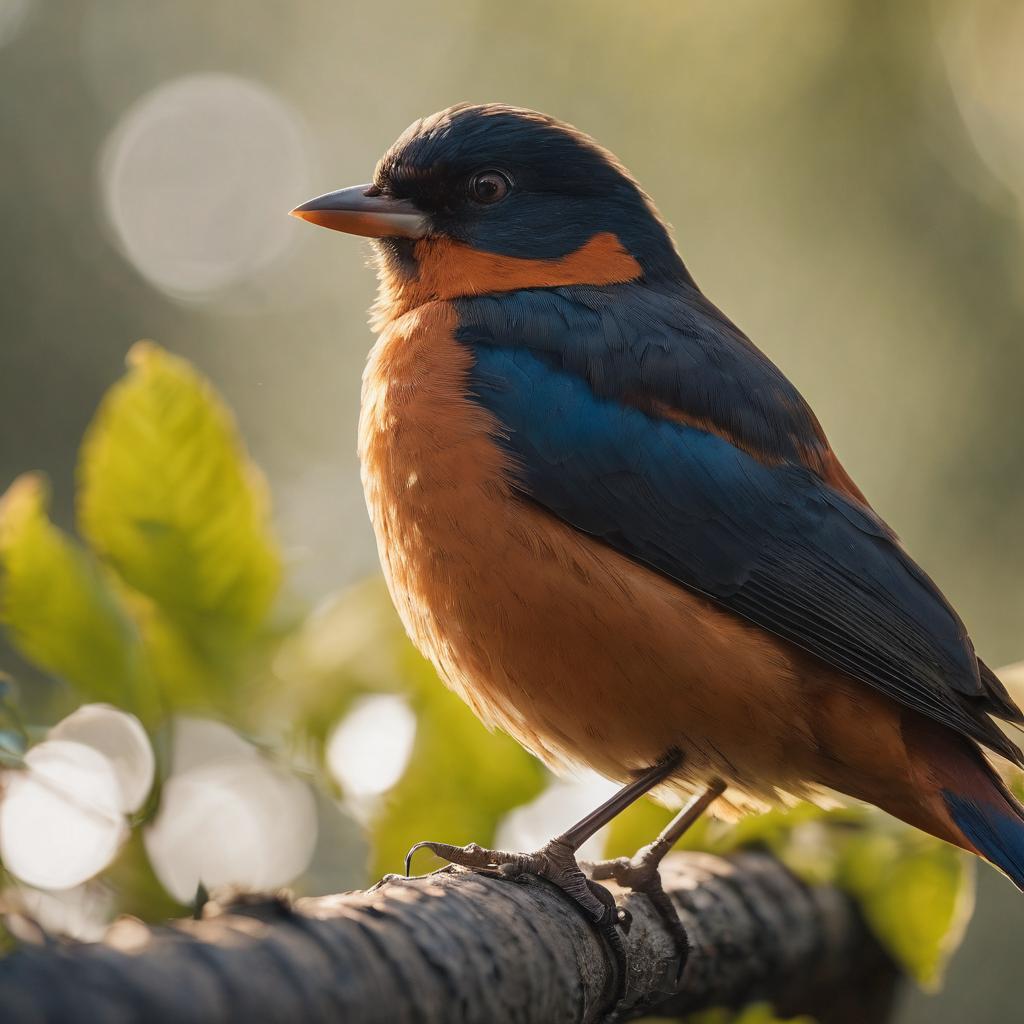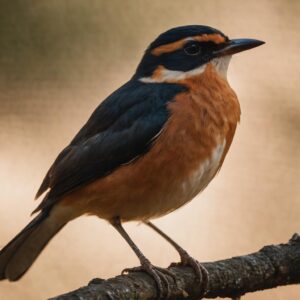
Exploring Bird Behavior and Communication
Contents
- 1 Understanding Avian Social Structures
- 2 The Role of Vocalizations in Bird Communication
- 3 Body Language and Posturing in Birds
- 4 Exploring Mating Behaviors in Avian Species
- 5 The Intricate Nesting Habits of Birds
- 6 The Significance of Feeding Behaviors in Bird Communication
- 7 Avian Parenting: Caring for Offspring
- 8 Migration Patterns and Navigation Abilities in Birds
- 9 Territoriality and Aggression in Avian Communities
- 10 The Impact of Human Interaction on Bird Behavior
Understanding Avian Social Structures
Birds exhibit a remarkable array of social structures, varying across species and even within populations. These social structures can range from solitary individuals to complex social hierarchies. Some birds, such as certain raptors and owls, are primarily solitary and tend to establish large territories that they defend against intruders. On the other hand, many species of passerines, or perching birds, form flocks of various sizes that may include hundreds or even thousands of individuals.
In these social groups, individuals engage in various cooperative interactions and communication behaviors. For instance, flocking birds often engage in synchronized flight, moving together in an intricate dance that allows them to navigate and forage more efficiently. They may also engage in vocal communication, producing a chorus of chirps, calls, and songs that convey information about their location, group cohesion, and potential threats. Furthermore, within these social groups, there is often a hierarchy based on dominance, with certain individuals having priority access to resources such as food and mates. Understanding these avian social structures provides insights into the complexities of bird behavior and the factors that shape their social lives.
The Role of Vocalizations in Bird Communication
Birds are known for their beautiful songs and calls, but these vocalizations serve a much greater purpose than just creating melodic tunes. Vocalizations play a crucial role in bird communication, allowing them to convey various messages to one another. From attracting mates to warning of danger and defending territory, vocalizations serve as an essential tool in the social dynamics of avian communities.
Each species of bird has its unique vocal repertoire, consisting of calls, songs, and even non-vocal sounds such as clapping wings or drumming on tree trunks. These vocalizations carry distinct meanings and serve different purposes. For example, many birds use songs to establish and defend their territories, declaring their presence and warding off potential rivals. Calls, on the other hand, serve as alarms, indicating the presence of predators or other potential threats. Birds also use intricate vocalizations during courtship rituals, wooing potential mates with their melodic notes and complex song patterns. Through their vocalizations, birds can effectively communicate and interact with one another, enhancing their chances of survival and successful reproduction.
Body Language and Posturing in Birds
Body language and posturing play a crucial role in avian communication. Birds use these nonverbal signals to convey important information to one another. One common example of body language in birds is the fluffing out of feathers. When a bird fluffs out its feathers, it can indicate that the bird is feeling threatened or is trying to appear larger to intimidate potential competitors or predators. Similarly, a bird may lower its head and spread its wings as a defensive display, signaling its readiness to defend its territory or its young.
In addition to defensive postures, birds also use body language to express courtship and mating behaviors. For example, male birds often engage in elaborate displays of dancing, hopping, and puffing out of colorful plumage to attract a mate. These displays serve as signals of the male’s health, genetic quality, and ability to provide for offspring. The female bird, in turn, may respond to these displays by adopting receptive postures or engaging in reciprocal displays, indicating her interest in the male.
Overall, body language and posturing in birds are fascinating aspects of avian behavior. These nonverbal signals are integral to their survival, helping them establish social hierarchies, defend their territory, attract mates, and successfully raise offspring. Understanding and studying these intricate behaviors can provide valuable insights into the complex world of avian relationships.
Exploring Mating Behaviors in Avian Species
Mating behaviors in avian species are incredibly diverse and fascinating to observe. Birds employ a wide range of strategies to attract mates and ensure successful reproduction. One common behavior is courtship displays, where males and females engage in elaborate rituals to attract a potential partner. These displays often involve impressive visual and vocal performances, showcasing the bird’s physical attributes, agility, and breeding prowess. From intricate dances to melodious serenades, these displays are essential in conveying the bird’s fitness and genetic quality to potential mates.
In addition to courtship displays, avian species also engage in other mating behaviors such as nest-building and territorial defense. Building a nest is an important part of the mating process, as it provides a safe and secure environment for the offspring. Male birds may bring materials or food to the female, demonstrating their ability to provide for and protect their future family. Meanwhile, territorial defense is crucial for establishing and maintaining a breeding territory, ensuring that the resources within that territory can support the upcoming offspring. This behavior often involves aggressive interactions between competing males, where they vocalize and posture to establish dominance and secure their breeding rights. Understanding these complex mating behaviors in avian species provides valuable insights into their evolutionary adaptations and the dynamics of their reproductive success in the natural world.
The Intricate Nesting Habits of Birds
Birds have evolved a fascinating array of nesting habits that are both functional and intricate. One remarkable example is the cavity-nesting behavior observed in certain avian species. These birds, such as woodpeckers and bluebirds, actively seek out hollow spaces within trees or man-made structures to build their nests. By utilizing pre-existing spaces, these birds are able to save energy and time that would otherwise be spent on excavating their own nesting cavities. Instead, they focus their efforts on designing cozy nests using soft materials like feathers, moss, and grass, ensuring a secure and comfortable environment for their eggs and chicks.
Another noteworthy nesting habit seen in birds is the construction of elaborate woven nests. Species like the weaverbirds and the Baltimore orioles engage in complex weaving techniques, intricately crafting their nests from various materials like grass, sticks, and plant fibers. These nests often have a spherical or elongated shape, with a small side entrance for the birds to enter and exit. The weaving process involves an intricate interlocking technique, with the birds skillfully manipulating the materials to create a sturdy and durable structure. This remarkable nesting behavior is not only a testament to the birds’ dexterity and architectural skills but also provides protection and camouflage for their vulnerable offspring.
Intriguingly, these nesting behaviors are not limited to specific species but vary greatly depending on the bird’s habitat, ecological niche, and evolutionary adaptations. Understanding the diverse nesting habits of birds not only enriches our knowledge of avian biology but also highlights the incredible diversity and adaptability of these fascinating creatures. By appreciating and studying their nesting behaviors, we can gain insight into their reproductive strategies and their ability to thrive in a wide range of habitats.
The Significance of Feeding Behaviors in Bird Communication
Feeding behaviors play a crucial role in bird communication, serving as a form of expression and a means of establishing social hierarchies. For many species, food availability and access to resources can determine individual survival and reproductive success. Birds use various feeding behaviors to convey messages to one another, such as dominance, aggression, or courtship.
One common feeding behavior seen in many avian species is the “begging display,” in which young birds beg for food from their parents or other adult birds. This behavior involves vocalizations, postures, and movements that signal hunger and dependence. By engaging in begging displays, young birds communicate their need for nourishment and solicit care from their parents or older members of their social group. The feeding response observed in adult birds during begging displays helps to strengthen the bond between parents and offspring or to establish a cooperative network within a social group.
Avian Parenting: Caring for Offspring
Avian parenting, a remarkable display of dedication and nurturing, plays a crucial role in the survival and development of offspring. Once the eggs hatch, both parents work tirelessly to provide for the chicks. They take turns incubating the eggs, ensuring a consistent, warm environment necessary for proper development. This shared responsibility also extends to feeding the young ones, as the parents diligently search for food and regurgitate it for the chicks to consume.
Communication between the parents and offspring is essential for their well-being. The parents use soft vocalizations to comfort and reassure the chicks, creating a sense of security. Through this vocal interaction, the parents also guide the chicks in developing their own vocal abilities, which will later serve as a means of communication within the avian community. Additionally, parents employ various body movements and postures to signal danger, instruct the chicks, and foster bonding within the family unit.
The complexity of avian parenting goes beyond providing food and protection. As the chicks grow, parents gradually introduce them to the outside world, preparing them for independence. They teach their young ones essential survival skills, such as foraging, how to identify potential threats, and even proper grooming techniques. This gradual process allows the chicks to develop both physical and cognitive abilities, ultimately preparing them for adulthood.
Understanding avian parenting provides valuable insight into the intricate nature of bird behavior. By observing the dedication and care shown by avian parents, we gain a deeper appreciation for their role in maintaining the delicate balance of nature. The next time you spot a cluster of birds attending to their offspring, take a moment to reflect on the remarkable efforts they put forth in ensuring the next generation’s success.
Migration is a fascinating phenomenon observed in many avian species. It is a regular seasonal movement of birds from one location to another in search of suitable habitats and resources. The patterns of migration vary among species, with some undertaking long-distance journeys spanning thousands of miles, while others migrate shorter distances.
One key aspect of migration is the impressive navigation abilities that birds possess. It is still a subject of scientific inquiry as to how birds navigate accurately across great distances. Research suggests that they rely on a combination of cues, including celestial signals, Earth’s magnetic field, landmarks, and even olfactory cues. For example, some birds use the position of the sun or stars as a compass to orient themselves, while others are able to detect and respond to the Earth’s magnetic field. Additionally, studies have illustrated that birds possess the ability to recognize and remember specific landmarks along their migratory routes, aiding in their navigation. Understanding these navigation abilities is crucial for unraveling the mysteries of bird migration and can help us appreciate the remarkable adaptability of these winged travelers.
Territoriality and Aggression in Avian Communities
Territoriality and aggression are innate behaviors observed in many avian communities. Birds, like other animals, establish and defend their territory to ensure access to essential resources such as food, water, and nesting sites. By marking their territory with vocalizations, visual displays, and physical confrontations, birds communicate their presence and assert their ownership.
Aggression is often a result of territorial disputes between individuals or groups of birds. These confrontations can range from minor skirmishes to intense battles that may determine the victor’s territorial dominance. Aggressive behaviors include aggressive vocalizations, physical attacks, and aggressive postures such as puffing feathers, raising wings, or pecking. The level of aggression exhibited by birds can vary depending on factors such as the scarcity of resources, the presence of competitors, and the breeding season. Understanding the intricacies of territoriality and aggression in avian communities helps us delve deeper into the dynamics of these fascinating and complex social structures.
The Impact of Human Interaction on Bird Behavior
Human interaction has undoubtedly had a profound impact on the behavior of birds. As urbanization continues to spread, birds have had to adapt to the presence of humans and the changes to their habitats. One of the most apparent alterations in bird behavior is their increased tolerance for human activity. Many species of birds have learned to live in close proximity to humans, nesting in parks, gardens, and even on buildings. This adaptability showcases the remarkable resilience of avian species in the face of human encroachment.
However, not all aspects of human interaction have a positive effect on bird behavior. The presence of humans, especially in heavily populated areas, can lead to increased stress levels among birds. Vibrations, noise pollution, and bright lights can disrupt their natural patterns and cause significant disturbances. This disturbance can lead to altered feeding habits, disrupted mating patterns, and even reduced reproductive success. It is crucial for humans to be mindful of their actions and to take steps to minimize their impact on bird behavior, particularly in areas where birds are highly vulnerable.



Average Rating